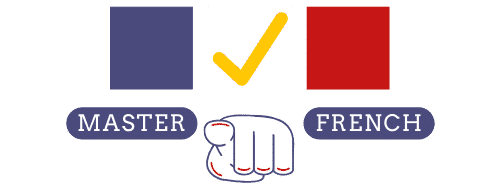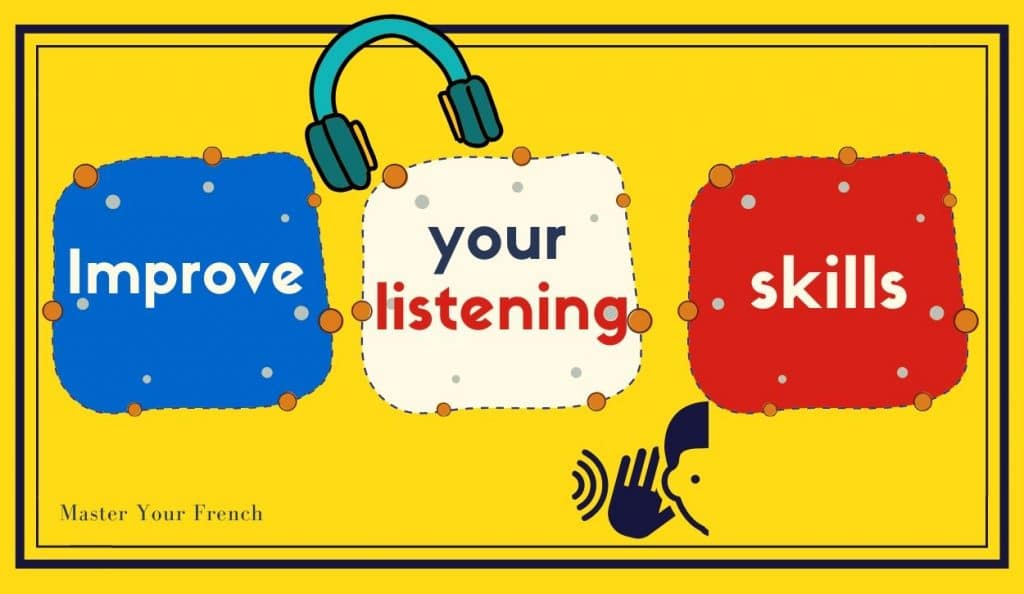9 tips to learn how to think in French
Updated: 16 May, 2025 by Mylene in Guides and Tips ▪

Stop translating in your head. Instead, train your brain to think in French. Learning to think directly in French, without relying on translation, is a crucial step toward true fluency. Whether you’re a beginner or an advanced learner, this skill transforms your relationship with the language, making your thoughts more natural and spontaneous. In this article, we share practical and accessible tips to train your brain to embrace French as a mode of thinking. From daily immersion to strategies for expanding your vocabulary, discover how to make French an integral part of your mental world.
How to start thinking in French?
Thinking in French is an important step in developing fluency. The nice thing is that you can practice at any time you want. It’s a personal thing because nobody knows your thoughts.
To be fluent, it will take more than just listening to tapes, working with a coach, or immersing yourself in the French culture.
In this article, we’ll give 9 tips and strategies to start thinking in French:
- Look around you
- Describe
- Imagine a conversation
- Use monolingual dictionaries
- Learn Expressions and sentences
- Change one thing
- Do something you like
- Recap your day
- Keep track
How to think in French? (video)
Learning to think in French is an important step towards fluency. It is a process that takes time like when you learn French grammar or French vocabulary.
To get the 9 tips that you need in order to start thinking in French watch this video Thinking In French: A Step Towards Fluency | 9 Tips You Need.
Be sure to watch the video on how to think in French and leave a comment. To follow more updates, subscribe to the YouTube channel and follow me on Instagram.
Thinking In French: A Step Towards Fluency
1. Look around you
Look around you and start naming the things that you can. For example, écran (screen), chaise (chair), stylo (pen). Try to name 10 things in French. You might just be surprised at how much you actually know! If it’s a challenge for you, spend some time on object naming.
Whenever you find yourself in a new environment, whether it’s a different room or out on the street, take a moment to observe your surroundings and mentally name the objects you see in French. This simple exercise helps you practice vocabulary in real-world contexts. If you encounter words you don’t know, jot them down in a notebook or on your phone. Later, look up their meanings and make a point to learn and review them. This habit not only builds your vocabulary but also trains your brain to associate everyday experiences directly with the French language.
2. Describe
The next step is to think in simple sentences: subject + verb and adjective. Be a little more detailed, like:
- l’écran est devant moi (the screen is in front of me)
- la chaise est grande (the chair is big)
- le stylo ne fonctionne plus (the pen isn’t working anymore)
Look around the room, up and down the street, wherever you are.
Challenge yourself! If the correct word for stylo isn’t coming to you, think:
- crayon
- feutre
- quelque chose pour écrire
- or anything else that can describe it
If you think of a sentence word by word in your own language don’t try translating it into French. Remember, the logical flow of words in your native though won’t sound well in French.
3. Imagine a conversation
Try to have a conversation with yourself.
For example, I’m thinking through the conversation I’m going to have with my colleague today, telling her why I need to change my schedule. Stating your reasons in French is an opportunity to practice the work-related vocabulary, the vocabulary of dayparts and time in French, and the agreement and disagreement vocabulary, among many other topics.
When you’re thinking of something to say, you have to start with the main elements of the sentence: the subject and the verb. Then, it will be easy for you to build the structure upon that foundation. Do it every day. You just need to have a simple conversation for two minutes every day.
4. Use monolingual dictionaries
If there’s something you can’t describe, look up the words you need in a dictionary, and memorize it. Memorize that phrase.
Instead of using a dictionary that translates the words into your native language, find a descriptive dictionary, which gives you interpretations and helps you understand the words from context in French.
You need to train your mind to work in French mode rather than translation mode. Consulting a monolingual dictionary requires greater cognitive effort, as you must decipher explanations in the target language. This effort strengthens your brain and enhances your ability to process information in French without relying on translation. Over time, this makes your thoughts and reactions more spontaneous.
5. Learn expressions and sentences
The structure of your native language is different from the structure of French. So do not try to translate word for word but say sentences globally. You have to focus on the idea, the content, and not think of all the grammar rules.
For example, learn sentences or phrases like “il fait beau aujourd’hui” (the weather is nice today). The more the days will pass and the less you will think about these words.
It’s no secret that certain words are more valuable than others, mainly because they’re used more frequently. Be selective and learn the most used words in French!
6. Change one thing
Change at least one of your everyday life things to French. Here are some ideas that you can easily switch to French today:
- Switch your calendar to French
- To-do lists
- A grocery list
- Write your journal in French
- Phone settings
- Internet settings
- Read a newspaper in French
- Change your apps to French
- A recipe
7. Do something you like
Choose something you like and do it only in French. It can be following:
- a cooking recipe
- a sports session in French
This will stimulate you because you enjoy cooking or you like sports and in addition, you will learn new vocabulary in French. By linking the language to an activity you regularly practice, you create strong mental connections. If you describe your yoga sessions in French (“I’m doing the downward-facing dog pose”), your brain starts associating those moments with the language, which encourages spontaneous thinking in French.
8. Recap your day in French
You can do it every night after you lay down for bed, but before you fall asleep. Recap your day in French. It must become a routine and you’ll never forget doing it every day.
Summarizing your day forces you to formulate complex thoughts in French without preparation, which trains your brain to think directly in the language. For example, saying “Today, I worked on a project and ate a salad at noon” pushes you to structure sentences naturally, without relying on translation.
9. Keep track
The ideal is to be able to follow all of your efforts. I invite you to cross your calendar on the fridge or on your phone (there are many habits tracking apps that you can us). The goal is to train your brain a little bit every day. Learning a language is not a sprint, it’s a marathon. And it’s more stimulating to see your progress and all the work you’ve done.
Infographic on how to think in French
Pick one or more of these suggestions and start using them whenever it’s appropriate based on your situation and the context you are in. These steps are summarized in the infographic below. To check more tips on how to learn French better, check the following article: How to Learn French Better: 5 Keys for Success

Conclusion
In this article, I have presented you with a list of practical exercises you can implement today to start thinking in French. From daily immersion to keeping a personal journal, these strategies aim to anchor the language in your mind and make your thoughts more fluid and natural. However, there are countless other tips to explore to deepen this skill. Whether it’s changing the language of your devices, engaging in conversations with native speakers, or immersing yourself in Francophone culture through music, literature, or cinema, every effort counts toward making French second nature. The key is to persevere, accept moments of hesitation as an integral part of the process, and celebrate your progress, no matter how small. With patience and consistency, you will find that thinking in French becomes not only possible but also an enriching experience that opens new perspectives on the language and yourself. So, start now and let French shape the way you see the world! If you’d like to get more tips, follow Master Your French on YouTube.



I WOULD LIKE EVEN MORE INFORMATION ON HOW THINK IN FRENCH .
I THOUGHT THIS WAS A GREAT ARTICLE !
Hello! Thank you for the comment. A très bientôt!